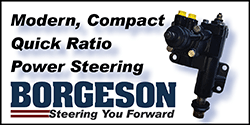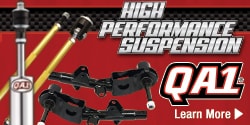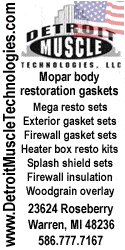Should I try to change the slot the cam is set on? I think in the video I watched Holley said setting 1 is generally for engines idling below 1000rpm and 2 is for over 1000rpm. I have my idle set right now at about 750-800, any higher and I start getting dieseling issues. When it had the stock jets in it it didn't stumble the way it does now but chasing better mpg I'm running the smaller jets and trying to work around it.
I know many people say that jets don't affect mpg because when I'm cruising down the highway I'm on the idle circuit but I have to say this: if jets don't change economy when cruising and I needed to fix my mixture setting instead, why did leaning out the idle mixture get me from 6mpg highway to 7mpg highway but changing jets from a 71 primary to a 66 primary (not right away, over time) get me from 7mpg to as high as 16mpg?
You do cruise on the main jet. If you are cruising on the idle circuit something is wrong.
The correct procedure to tune for primary main jet size is to block the power valve off.
Then drive the car on a flat road at cruise speed. Keep reducing the primary main jet until you get a SLIGHT lean surge.
Go up two sizes and never touch the primary main jet again, unless you are tuning for cruise.
Reinstall the power valve.
To tune for wide open throttle you increase the size of the power valve channel restrictors to add fuel at WOT on the primary side.
Of course if it’s too fat at WOT you reduce the size of the power valve channel restrictors.
And the main jet on the secondary side for WOT.
You never want to change the primary main jet to correct for WOT. Ever. This comes from a misunderstanding of how the power valve and main jet systems work together.
You cruise on the primary main jet. So you want that as lean as the engine will tolerate. Then the power valve adds fuel at WOT and at tip in.
Also, keep in mind that the main air bleed controls when the booster starts to add fuel. I harp on this constantly because it’s misunderstood and getting it wrong is one of many tuner induced holleyitis that is all too common.
A bigger main air bleed will start the booster sooner, so the engine will be richer, sooner. If you start the booster too soon, the engine has more fuel than it needs so we start reducing the primary main jet when in reality that big(ger) main air bleed is making it rich.
Also the bigger main air bleed will make the engine leaner at high rpm (air flow).
A smaller main air bleed will delay the start of the booster, so you will be on the T slot longer before the booster starts adding fuel. It will also be richer at high rpm (air flow).
You can get lost very quickly if you aren’t careful.
And to make things worse, we are still living in the dark days of the 1990’s when emulsion became the playground of carb tuner wannabes.
Too much emulsion will cause too in issues that get blamed on everything but too much emulsion.
To that end, I have a base tuneup that I start with. I use an .026 main air bleed and two .028 emulsion jets.
If you have annular boosters you will most likely end up with just one emulsion hole. If you have tunnel ram and annular boosters I pretty much guarantee you’ll only need one emulsion jet. You just block the rest.
Edit: I forgot to mention this all assumes you have the timing correct.
















